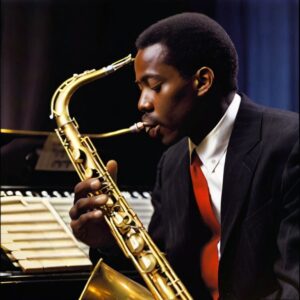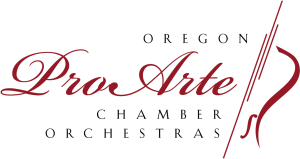Jazz and blues—these genres have become one of the most iconic and beloved forms of music worldwide. But did you know classical music influenced both? Yup, the echoes of Bach, Beethoven, and Mozart reverberate through the riffs and rhythms of jazz and blues.
Roots in European Classical

When we explore the origins of jazz and blues music, there is a tendency to emphasize the profound influence of African rhythms, melodies, and cultural expressions that these genres undeniably bear. It is important to acknowledge the substantial impact that European classical music has had on the development and evolution of these quintessentially American styles. European classical traditions have profoundly shaped jazz and blues through sophisticated tonal harmony, structured musical forms, and refined techniques.
One example of this influence is the ubiquitous 12-bar blues format. This structure, which underpins countless blues songs, demonstrates how classical principles of musical organization have been seamlessly integrated into an inherently African-American musical idiom. The blues scale, while it possesses its own unique character with its flatted thirds and sevenths, slides effortlessly into classical harmonies. This blending creates a compelling fusion that marries the emotional depth and raw expressiveness of the blues with the intellectual rigor and structural complexity of classical music.
This merger of influences has given rise to a richly textured musical landscape where old-world sophistication harmonizes and interacts with New World soul. This synergy underscores the interconnectedness of global musical traditions and highlights the dynamic and ongoing evolution of music across cultures and epochs. Jazz and blues represent a felicitous marriage of African and European elements and serve as a testament to the diverse and shared human experience that music encapsulates.
Syncopation and Polyrhythm
The intertwining of classical and jazz is perhaps most evident in the concept of syncopation. Syncopation, a staple in jazz, where the off-beats steal the spotlight, finds its origin in classical ragtime pieces. Scott Joplin’s rags, often referred to as ‘classical ragtime,’ feature this technique. These compositions can be likened to the works of Chopin or Liszt due to their technical complexity and emotional depth.
Polyrhythm, another core element in jazz, can also trace its lineage back to classical compositions. Stravinsky, in his groundbreaking ballet “The Rite of Spring,” employed complex rhythmic patterns that resonate with contemporary jazz’s intricate drum sequences. In both genres, this interplay of rhythms provides a sense of movement and dynamism that keeps listeners engaged.
You might find it surprising how much jazz musicians owe to classical modes. Modes, a system of scales that predate much of Western classical music, received a revival in the 20th century jazz scene thanks to Miles Davis and John Coltrane. They explored modes extensively, taking a page directly from ancient Gregorian chants and medieval modal music.
What’s fascinating here is the shift from chord-based to scalar harmony. Miles Davis’ album “Kind of Blue” is almost a homage to modal classical structures. He took these ancient modes and injected them with the spontaneous creativity and expressive nuances of jazz. A seamless synergy of the archaic and the avant-garde.
Sonata Form and Jazz Standards
Sonata form, a three-part structure typical in classical symphonies and sonatas, has influenced the way jazz standards are structured. Take George Gershwin’s “Rhapsody in Blue” as a prime example—a piece that sits comfortably between both realms. Gershwin used the sonata form, with its exposition, development, and recapitulation, to craft a jazz piece that feels like a classical composition in its scope and ambition.
Jazz improvisation can be seen as the development section in a classical sonata. Musicians take themes, play with them, and then return to the original tune, creating a cyclic interplay between known and unknown, written and spontaneous.
Harmonic Complexity
Jazz harmony often borrows from the rich, textured chords of late-Romantic classical composers. Look at the lush harmonies of Debussy and Ravel, often termed ‘musical impressionists,’ whose music captured emotion and atmosphere through intricate harmonic techniques. Jazz musicians of the ’50s and ’60s, particularly those in the post-bop and cool jazz movements, frequently adopted these harmonically complex textures.
Debussy’s use of extended chords, modulations, and non-traditional scales charted new harmonic territories. Herbie Hancock and Bill Evans took similar harmonic ventures, creating beautiful, nuanced layers of sound that captivate listeners.
Instrumentation Crossovers
The instrument choices in classical and jazz also tell a story of cross-pollination. Wind instruments like the clarinet, saxophone, and trumpet have histories in classical music that transferred into jazz bands. Benny Goodman, for instance, known as the ‘King of Swing,’ was classically trained and even played with major symphony orchestras.
String instruments, too, straddle both worlds. Jazz violinists like Stéphane Grappelli brought classical techniques into their improvisations, seamlessly blending two musical traditions. The piano, an ever-present staple in classical recitals, found a dynamic new role in jazz, from the stride piano of Fats Waller to the bebop brilliance of Bud Powell.
Compositional Techniques
From contrapuntal to thematic transformations, classical compositional methods deeply penetrated jazz compositions. Counterpoint, the weaving of independent melodic lines to form a harmonious whole, is a textbook classical technique found in Bach’s fugues. Jazz composers like John Lewis of the Modern Jazz Quartet used counterpoint to elevate jazz compositions into something more intellectually robust and complex.
Thematic transformation, another classical technique, involves taking a theme and altering it through transposition, inversion, or augmentation, which became a favorite among jazz greats. Think of Duke Ellington’s suites or Charles Mingus’ large-scale compositions—they took small motifs, expanded them, reworked them, much like a Beethoven symphony or a Wagnerian leitmotif.
Classical composers themselves have flirted with jazz, further blurring the lines between these genres. Igor Stravinsky, for instance, wrote “Ebony Concerto” for Woody Herman’s jazz band, blending classical and jazz elements. Meanwhile, Darius Milhaud incorporated jazz rhythms and styles into his works, such as “La création du monde,” a ballet suffused with jazz influences.
Down the line, jazz musicians took these classical-jazz hybrid works and ran with them. The Art Ensemble of Chicago integrated classical elements into their free-form jazz, creating rich, unpredictable textures that honored both traditions.
